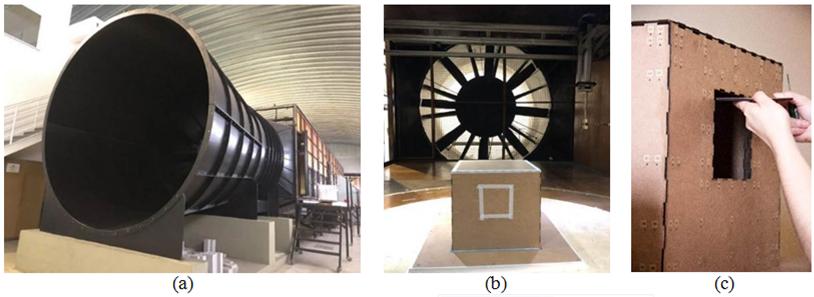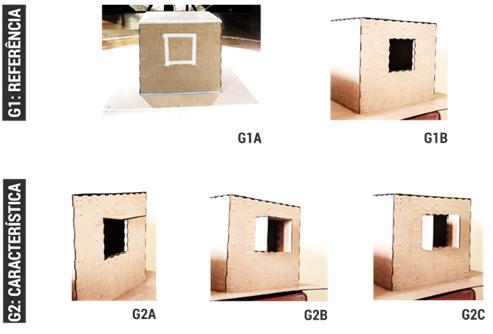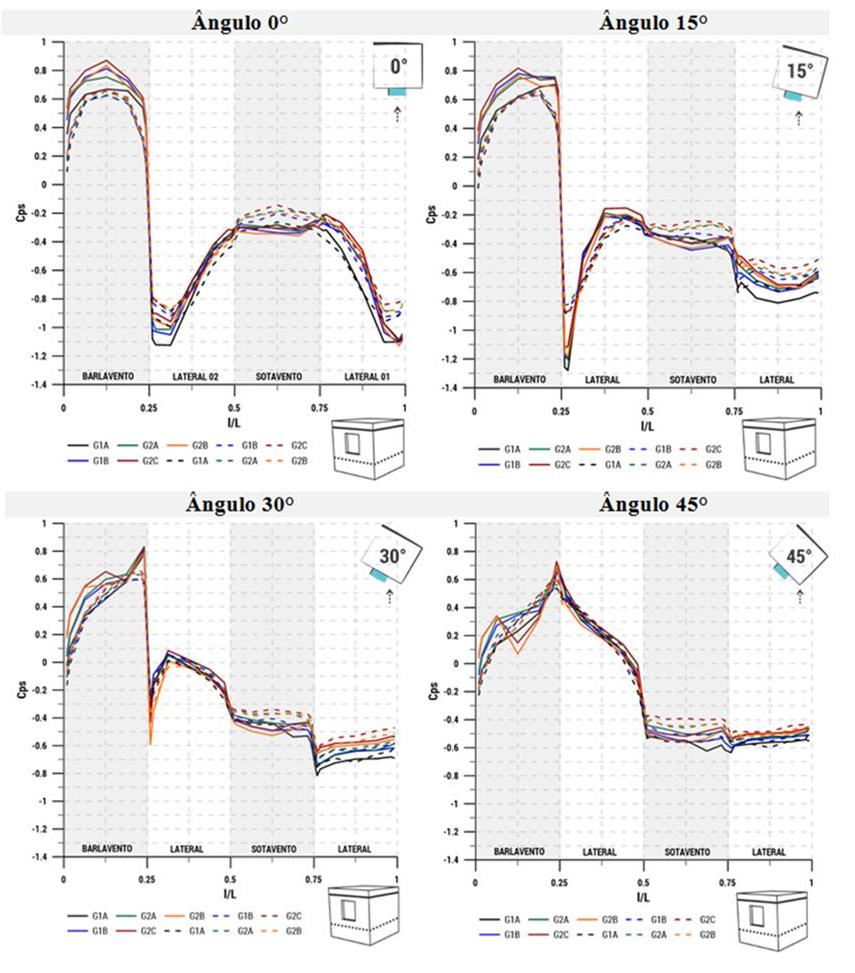Abstract
Natural ventilation in buildings is an important passive strategy to maintain indoor air quality and comfortable thermal environments. The pressure differential on buildings’ façades, quantified by the wind pressure coefficients (WPCs), directly impacts the performance of natural ventilation. Several factors, as wind direction, surroundings, terrain type, building geometry and facades’ details influence wind pressure distribution. Many investigations use wind tunnel tests or computational fluid dynamics simulations to evaluate the Cps in regular geometries. This paper aims to evaluate the impact of external shading devices on the WPCs of a generic isolated model with 3.0 m x 3.0 m x 2.7 m with two openings (with 1.0 m 2 each), centralised and placed on opposite façades with a windowsill measuring 1.1 m. Thus, from its reduced version (scale 1:7.5), five configurations (model without shadings, sealed model and model with openings, and typologies with horizontal, combined and vertical shading devices) are tested in a wind tunnel with eight wind attack angles (0° to 90° and 180°). The results show greater differences in cases with vertical shading devices exposed to wind attack angles of 45°, 60° and 75°.
Keywords:
Natural ventilation; Wind pressure coefficient (WPC); Wind tunnel; Shading device

 Thumbnail
Thumbnail
 Thumbnail
Thumbnail
 Thumbnail
Thumbnail
 Thumbnail
Thumbnail
 Thumbnail
Thumbnail
 Thumbnail
Thumbnail
 Thumbnail
Thumbnail
 Thumbnail
Thumbnail
 Thumbnail
Thumbnail
 Fonte: adapatado de
Fonte: adapatado de  Fonte:
Fonte: Fonte:
Fonte: Fonte:
Fonte: Fonte:
Fonte: Fonte:
Fonte: Fonte:
Fonte: Fonte:
Fonte: Fonte:
Fonte: